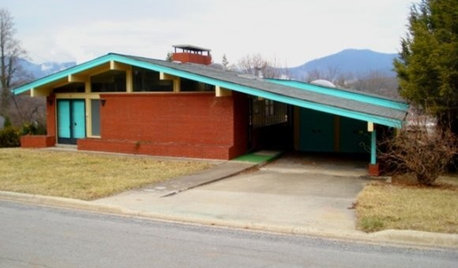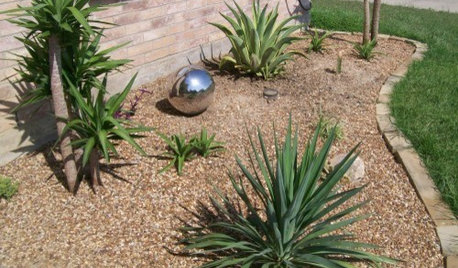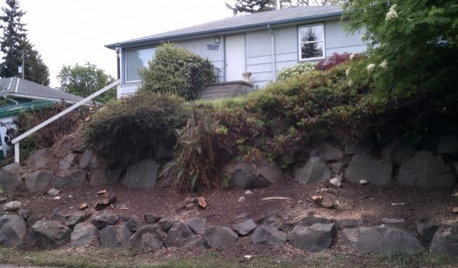Need advice on mulch dilemma
violetwest
10 years ago
Related Stories

COLOR3 Exterior Paint Dilemmas, 7 Palette Solutions
Houzzers ready to repaint their home exteriors get custom color advice from a design pro
Full Story
GARDENING GUIDESNew Ways to Think About All That Mulch in the Garden
Before you go making a mountain out of a mulch hill, learn the facts about what your plants and soil really want
Full Story
REMODELING GUIDESHouzzers to the Rescue: Users Solve Design Dilemmas
The proof is in the painting — and the pond. As Houzz users hit 100,000 discussions, see some of the results of their advice and ideas
Full Story
Design Dilemmas: 4 Questions for Houzzers
Share Your Advice for a Low-Water Garden, Wet Bar, Family Room and Basement Spa!
Full Story
Design Dilemmas: 5 Questions for Design Stars
Share Your Design Know-How on the Houzz Questions Board
Full Story
KITCHEN DESIGNDesign Dilemma: My Kitchen Needs Help!
See how you can update a kitchen with new countertops, light fixtures, paint and hardware
Full Story
MORE ROOMSDesign Dilemma: Decorating Around an Open Entryway
How Would You Design This Narrow Space?
Full Story
MORE ROOMSDesign Dilemma: The Perfect Basement Lounge
What Color to Paint It? Where to Put the TV?
Full Story
LIVING ROOMSDesign Dilemma: Share Ideas for a Navy Blue Room
Help a Houzz Reader Work With a Bold Choice for the Living Room Walls
Full Story
DINING ROOMSDesign Dilemma: I Need Ideas for a Gray Living/Dining Room!
See How to Have Your Gray and Fun Color, Too
Full Story







tishtoshnm Zone 6/NM
violetwestOriginal Author
Related Professionals
New Bedford Landscape Architects & Landscape Designers · Roosevelt Landscape Architects & Landscape Designers · Buford Landscape Contractors · Berkley Landscape Contractors · Essex Landscape Contractors · Newnan Landscape Contractors · Palos Verdes Estates Landscape Contractors · Peachtree City Landscape Contractors · Teaneck Landscape Contractors · West Orange Landscape Contractors · Columbia Decks, Patios & Outdoor Enclosures · Lakewood Decks, Patios & Outdoor Enclosures · Montgomery County Decks, Patios & Outdoor Enclosures · Novi Decks, Patios & Outdoor Enclosures · Wheaton Decks, Patios & Outdoor Enclosurestishtoshnm Zone 6/NM
violetwestOriginal Author
glib
violetwestOriginal Author
TXEB
violetwestOriginal Author
TXEB
violetwestOriginal Author
tishtoshnm Zone 6/NM
TXEB
Kimmsr
violetwestOriginal Author
toxcrusadr
violetwestOriginal Author
TXEB
violetwestOriginal Author
barb333
TXEB
violetwestOriginal Author
violetwestOriginal Author
Kimmsr
TXEB
violetwestOriginal Author
TXEB
violetwestOriginal Author
TXEB
violetwestOriginal Author
TXEB
violetwestOriginal Author
violetwestOriginal Author
TXEB
violetwestOriginal Author
violetwestOriginal Author
violetwestOriginal Author
TXEB
violetwestOriginal Author
nil13
violetwestOriginal Author
nil13
nil13
violetwestOriginal Author
violetwestOriginal Author
violetwestOriginal Author
violetwestOriginal Author
toxcrusadr
violetwestOriginal Author